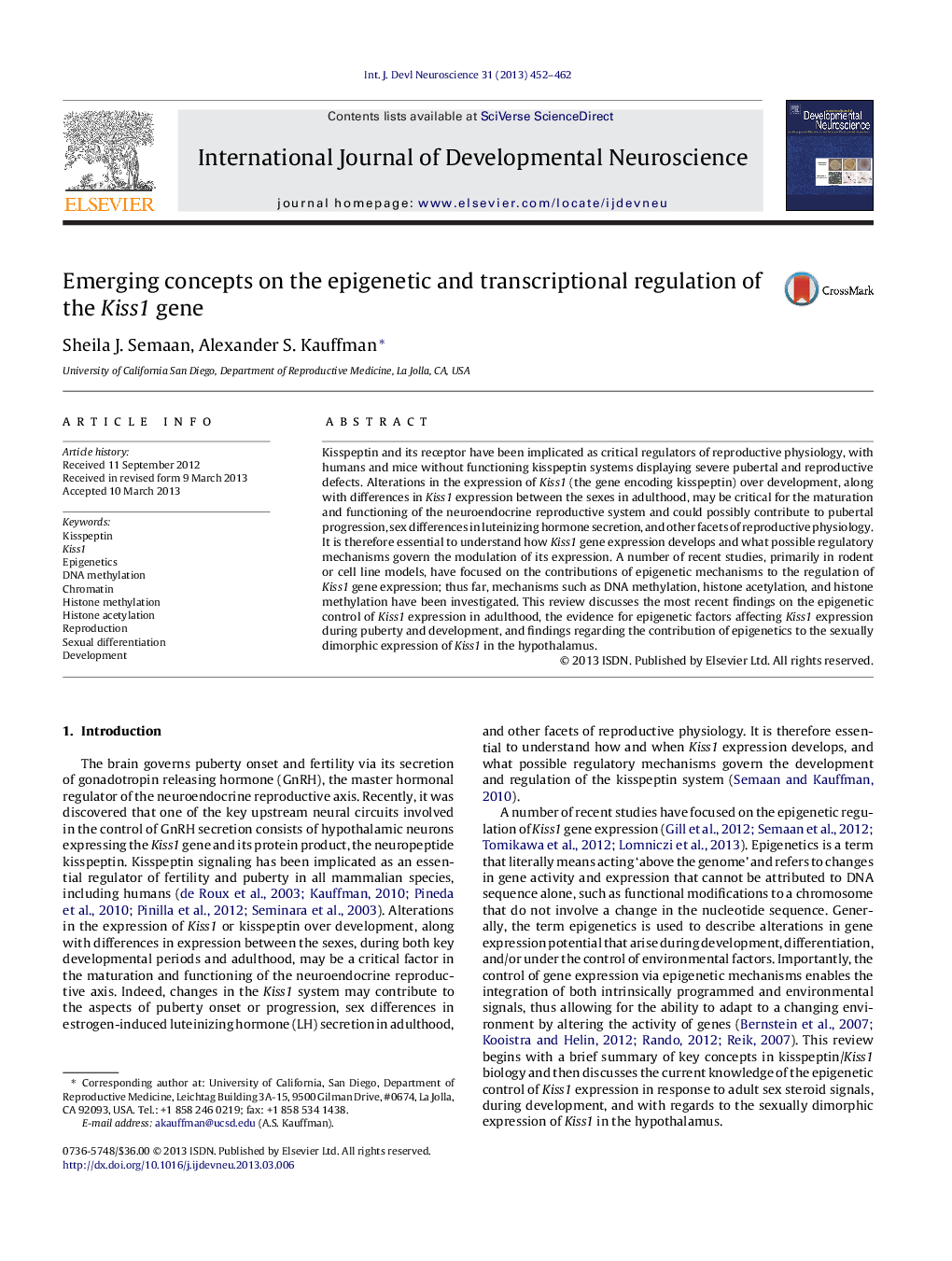| Article ID | Journal | Published Year | Pages | File Type |
|---|---|---|---|---|
| 2786148 | International Journal of Developmental Neuroscience | 2013 | 11 Pages |
•Kisspeptin is a critical regulator of puberty and adulthood reproductive physiology.•Neural Kiss1 expression varies between sexes and during development and adulthood.•Sex steroids change both histone acetylation and expression of the Kiss1 gene.•Sex steroids enhance the formation of a chromatin loop at the Kiss1 gene locus.•Kiss1 sex differences may be induced by DNA methylation but not histone acetylation.
Kisspeptin and its receptor have been implicated as critical regulators of reproductive physiology, with humans and mice without functioning kisspeptin systems displaying severe pubertal and reproductive defects. Alterations in the expression of Kiss1 (the gene encoding kisspeptin) over development, along with differences in Kiss1 expression between the sexes in adulthood, may be critical for the maturation and functioning of the neuroendocrine reproductive system and could possibly contribute to pubertal progression, sex differences in luteinizing hormone secretion, and other facets of reproductive physiology. It is therefore essential to understand how Kiss1 gene expression develops and what possible regulatory mechanisms govern the modulation of its expression. A number of recent studies, primarily in rodent or cell line models, have focused on the contributions of epigenetic mechanisms to the regulation of Kiss1 gene expression; thus far, mechanisms such as DNA methylation, histone acetylation, and histone methylation have been investigated. This review discusses the most recent findings on the epigenetic control of Kiss1 expression in adulthood, the evidence for epigenetic factors affecting Kiss1 expression during puberty and development, and findings regarding the contribution of epigenetics to the sexually dimorphic expression of Kiss1 in the hypothalamus.
